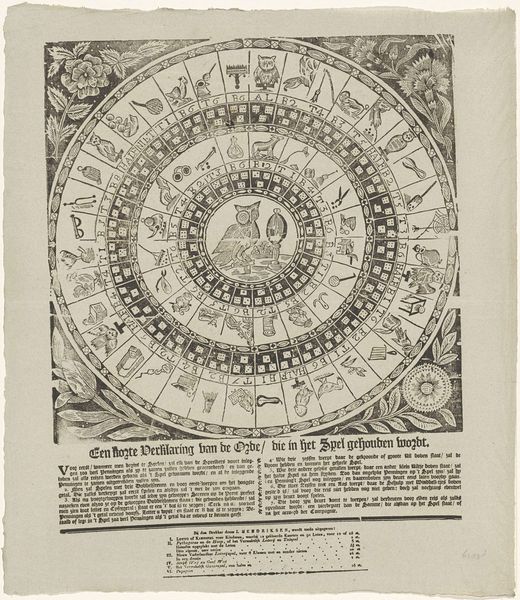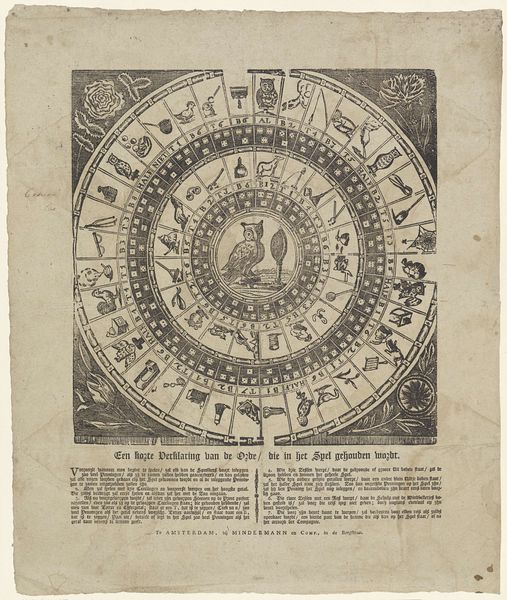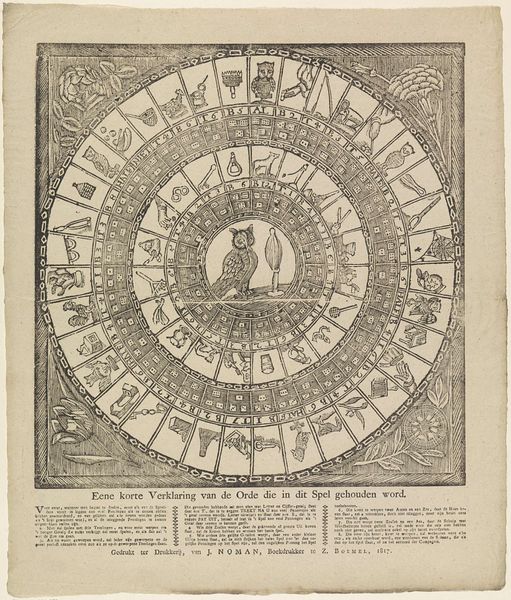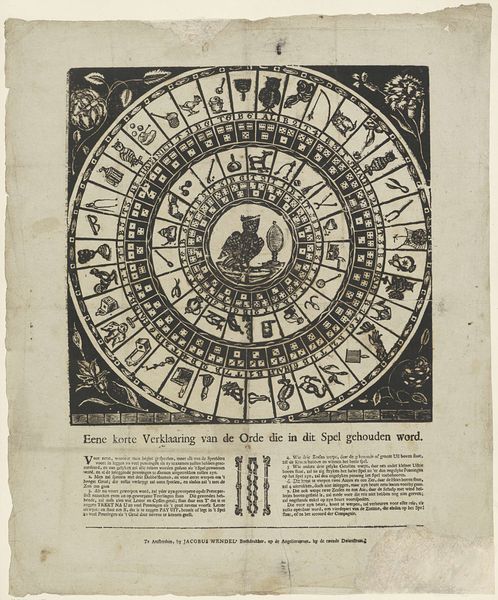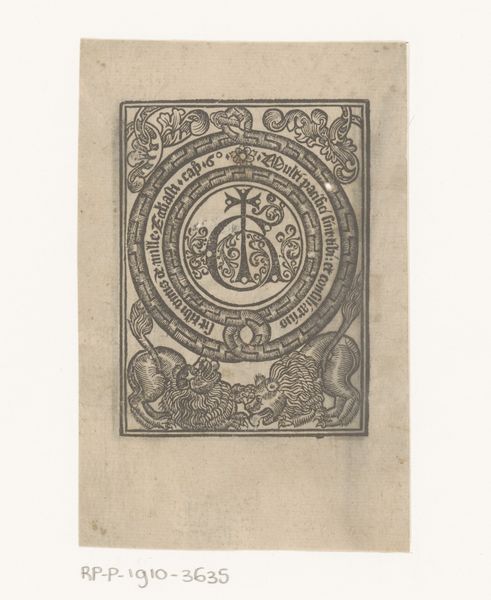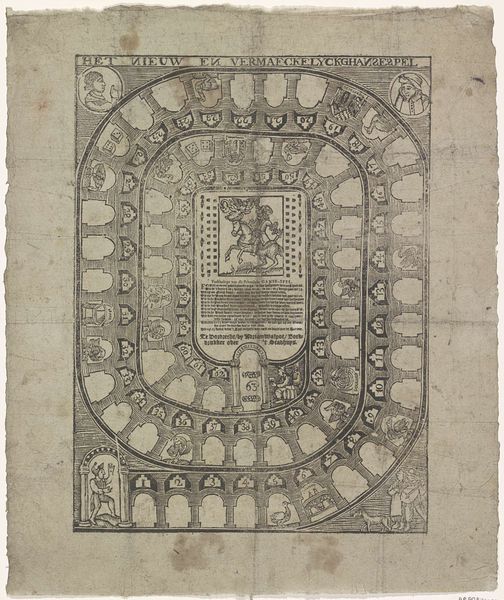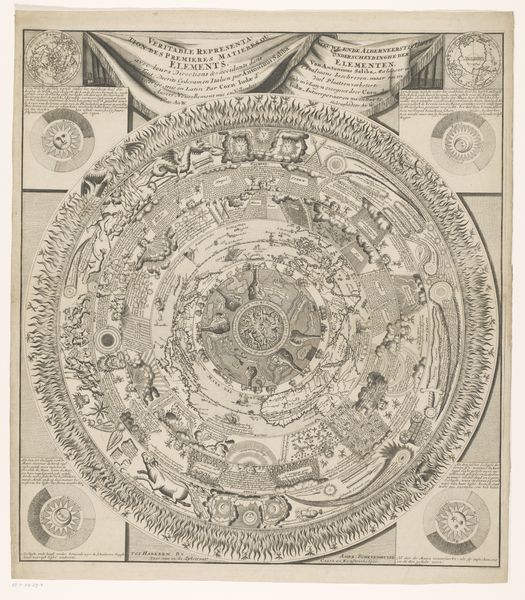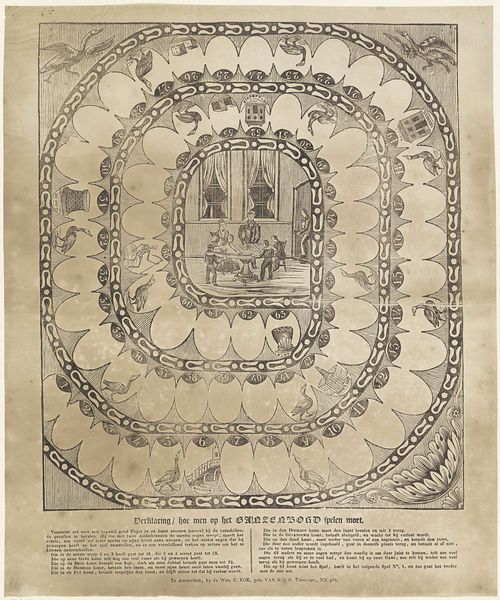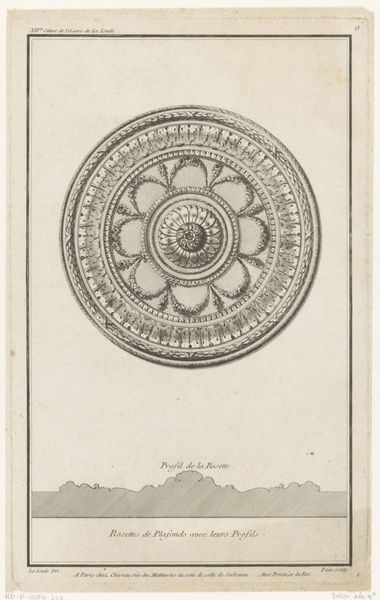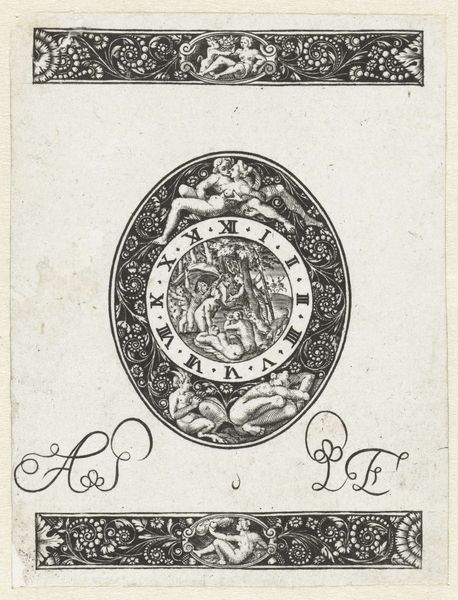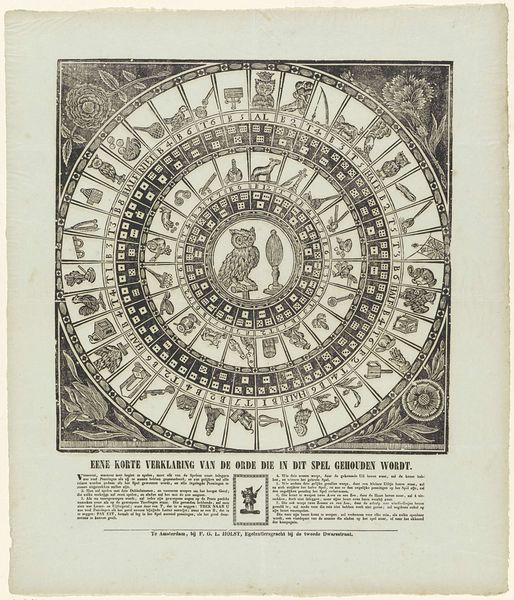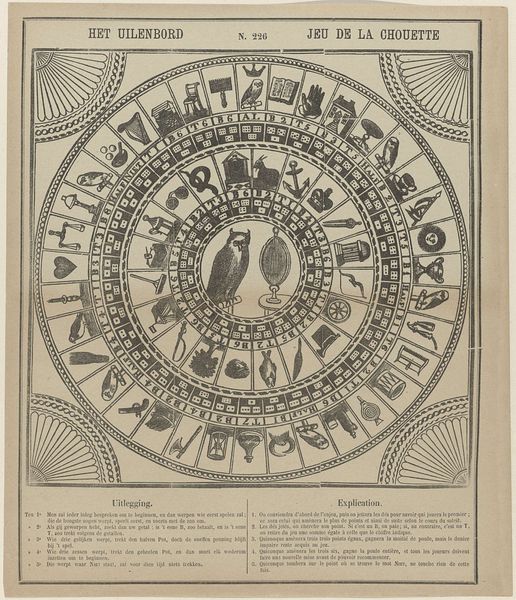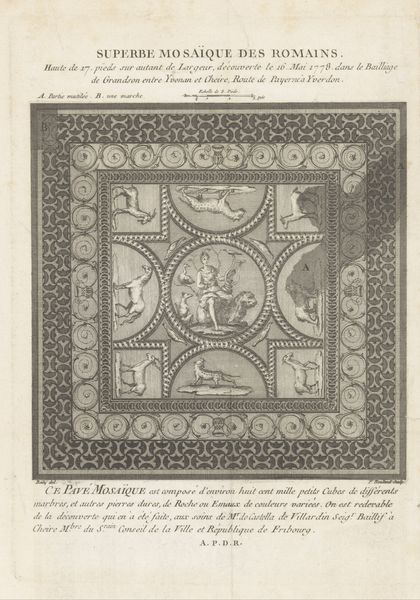
print, engraving
#
medieval
#
narrative-art
# print
#
old engraving style
#
woodcut effect
#
geometric
#
line
#
engraving
Dimensions: height 348 mm, width 306 mm
Copyright: Rijks Museum: Open Domain
Editor: This is "Uilenspel," a 17th-century engraving by an anonymous artist, housed in the Rijksmuseum. The composition is striking, a series of concentric circles filled with figures and symbols radiating from a central image of an owl. It feels very…coded. What do you see in this piece beyond its surface level visual elements? Curator: It's fascinating, isn't it? Beyond the captivating circular design, "Uilenspel"—meaning "Owl Game"—demands we consider its societal function. Think about the 17th century. Games like this weren’t just for amusement; they reflected, and sometimes subtly challenged, social hierarchies. Consider the symbolism of the owl, often associated with wisdom but also with folly, blindness. Does the game reinforce social structures, or offer a satirical commentary on them? Editor: I hadn't thought about it in terms of social commentary. The figures around the circles – some look like peasants, others like nobles – do you think they represent different social roles or classes engaged in this ‘game’ of life? Curator: Precisely! And look at how dice and chance are integrated. Does it suggest that fate, rather than merit, dictated one's position? And who gets to play the game? Are women included, or only represented through allegorical figures? How might we interpret this game through a feminist lens? These kinds of games were often used to teach morality or demonstrate life’s uncertainties to young men from privileged social groups. But the prominence of chance here troubles the moral undertones. Editor: It’s amazing how a simple game could reflect so many power dynamics. Curator: Absolutely. And that's where art history intersects with contemporary theory. By situating "Uilenspel" within its historical and social context, and questioning who has access, who benefits, and what ideologies are reinforced or challenged, we can unlock richer, more relevant understandings. Editor: I see this engraving now with completely different eyes, not just a pretty image but a cultural artifact. Thank you. Curator: My pleasure! Examining the art of the past through an activist lens provides vital critical thinking tools that help us engage more actively with our contemporary landscape.
Comments
No comments
Be the first to comment and join the conversation on the ultimate creative platform.
